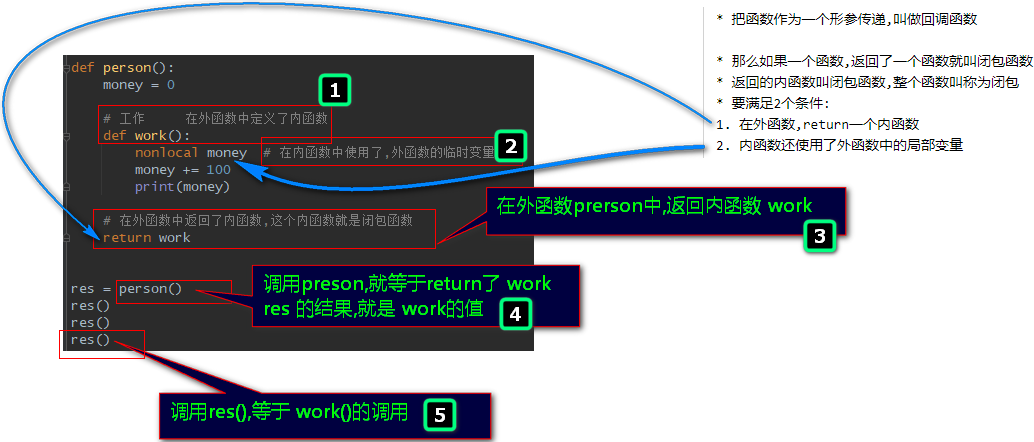4.闭包函数
-
把函数作为一个形参传递,叫做回调函数
-
那么如果一个函数,返回了一个函数就叫闭包函数
-
返回的内函数叫闭包函数,整个函数叫称为闭包
-
要满足2个条件:
- 在外函数,return一个内函数
- 内函数还使用了外函数中的局部变量
"""
work是工作,调用1次外面的money变量就增加100,overtime函数,运行一次加200,如果再次给money变量赋值,那么会改变money全局变量.是有问题的
"""
money = 0
def work():
global money
money += 100
def overtime():
global money
money += 200
def buy():
global money
money -= 40
#调用3次,money变成了300
work()
work()
work()
overtime()
buy()
money = 0
print(money)
1.闭包函数示例:用闭包函数,改造上面的代码,就会不会修改全局变量
#定义1个函数
def person():
money = 0 #在函数中定义了一个局部变量
# 工作 在外函数中定义了内函数
def work():
nonlocal money # 在内函数中使用了,外函数的临时变量
money += 100
print(money)
# 在外函数中返回了内函数,这个内函数就是闭包函数
return work
res = person()
res()
res()
res()
- 画图理解

结论
- 此时,就不能够在全局中对money局部变量做任何操作
- 闭包的作用:保护了函数中的变量,不受外部的应影响,该函数既能够修改,又能够使用
3.监测函数是不是闭包函数,如果是闭包函数,返回 cell ,不是闭包函数返回None
print(res.__closure__)
(<cell at 0x000002BDA7166640: int object at 0x000002BDA7176C70>,)



 浙公网安备 33010602011771号
浙公网安备 33010602011771号